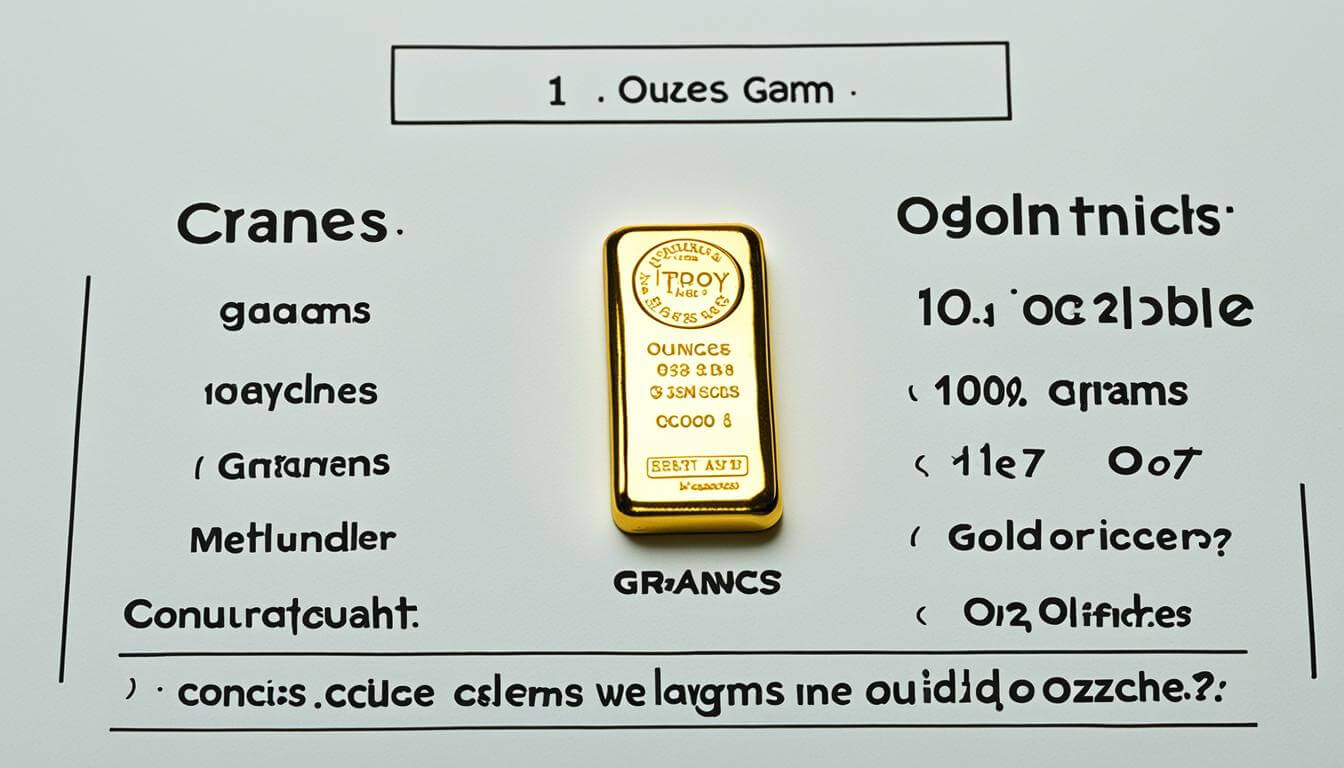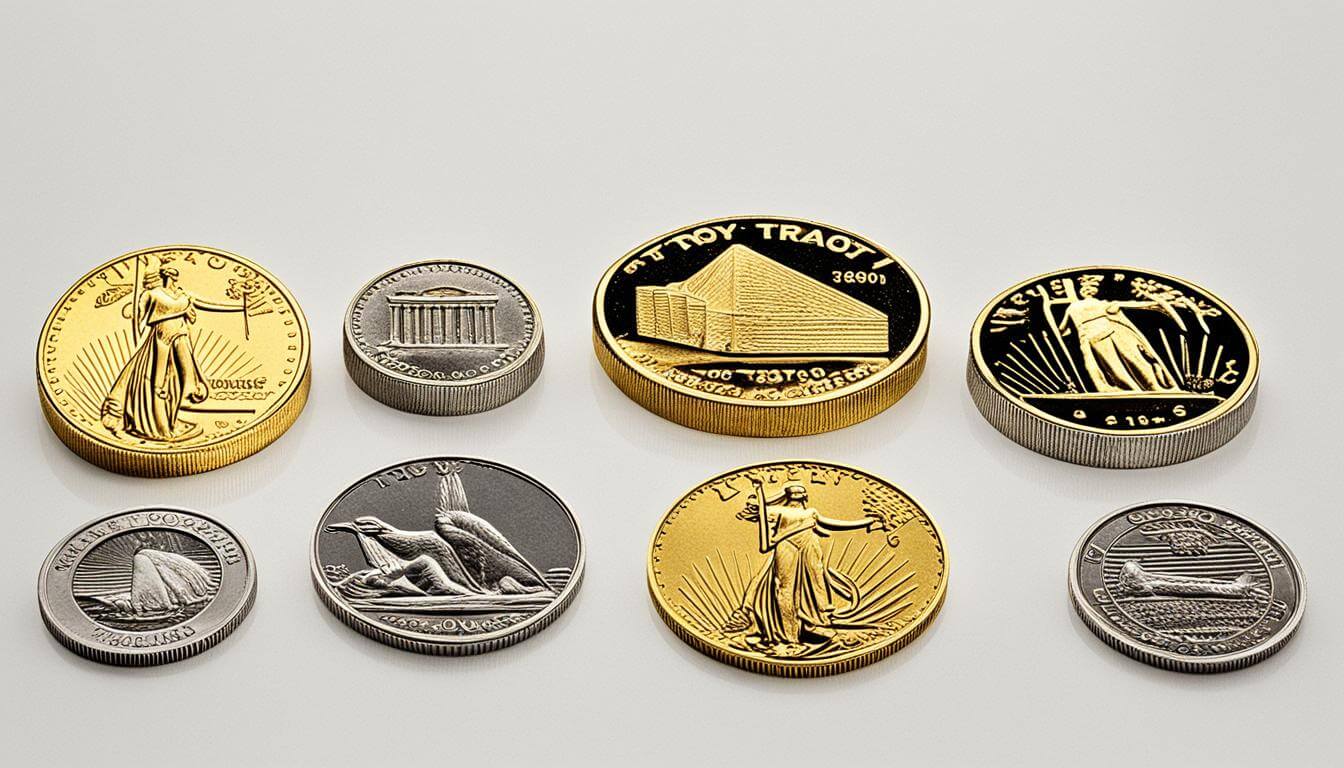Gold is a precious metal that holds immense value and is highly sought after by investors and collectors. When dealing with gold, it’s important to understand the different measurements and conversions involved, especially when it comes to ounces and grams.
In this guide, we will explore the conversion of 1 ounce of gold to grams, providing you with a quick and easy reference for converting between these two units of measurement. Whether you’re an investor, jeweler, or simply curious about gold, this guide will assist you in accurately converting ounces to grams and vice versa.
What is a Troy Ounce?
A Troy Ounce is a unit of measurement commonly used in the gold trade to measure precious metals like gold and silver. It is part of the Troy weight system, which is a system of measurements specifically designed for weighing precious metals. One Troy Ounce is equal to 31.1034807 grams, which is slightly more than a standard (Imperial) Ounce. This difference in weight is important to consider when converting ounces to grams or vice versa.
Why Does Oz vs Ozt Matter?
In the gold industry, understanding the distinction between ounces and troy ounces is crucial. Gold is typically traded and valued based on troy ounces, making it essential to use the correct unit of measurement. Using the wrong unit can lead to discrepancies in gold weights and values, which can have a significant impact on the price of gold products.
Investors and traders must be aware of the difference between ounces and troy ounces when dealing with gold. By using the appropriate unit of measurement, they can ensure accurate calculations and avoid any potential errors or misunderstandings.

The distinction between ounces and troy ounces is especially important in gold weight conversion. When converting between ounces and grams, it’s crucial to use the correct conversion factors based on the type of ounce being used (standard or troy) to ensure accurate results.
To summarize:
- Gold is typically traded and valued based on troy ounces.
- Using the wrong unit of measurement can lead to discrepancies in gold weights and values.
- Accurate gold weight conversion requires understanding the difference between ounces and troy ounces.
To avoid any misunderstandings or errors in gold transactions, it is essential to use the appropriate unit of measurement for gold, whether it is an ounce or a troy ounce.
History of Troy Ounces for Precious Metals
The use of troy ounces in the precious metals industry has a longstanding history dating back centuries. The term “troy” is believed to have originated from the trade market town of Troyes in France. During the 1400s, the troy ounce system gained widespread adoption in Europe and became the official weight standard for precious metals like gold and silver in England. It was during this time that the troy ounce system established its significance in the gold trade with its precise and consistent measurement. The United States inherited the British tradition and further solidified the troy ounce system as the official weight standard for gold and silver in 1828.

For centuries, the troy ounce system has provided a reliable and consistent method for measuring precious metals. Its historical significance as the weight standard for gold and silver underscores the importance of accurately understanding and using troy ounces in the gold industry today. By adhering to these established measurement standards, traders and investors can ensure transparency and trust in their transactions.
Converting Ounces to Grams
To convert ounces to grams, you can use the following conversion factor: 1 ounce = 28.35 grams. However, when converting troy ounces to grams, the conversion factor is different: 1 troy ounce = 31.1034807 grams. It’s essential to use the appropriate conversion factor based on whether you’re dealing with standard ounces or troy ounces.
Methods for Converting Ounces to Grams
To convert ounces to grams, there are several methods you can utilize. These methods ensure quick and accurate conversions between the two units of measurement.
Quick Conversion Method:
One simple and efficient method involves multiplying the number of ounces by the conversion factor of 28.35. This conversion factor represents the number of grams in a standard ounce. By multiplying the number of ounces by 28.35, you can obtain the equivalent weight in grams with ease.
Conversion Ratio Method:
Another effective approach is to utilize a conversion ratio. To do this, divide the number of ounces by the appropriate conversion factor. For standard ounces, use a conversion factor of 28.35, while for troy ounces, use a conversion factor of 31.1034807. These conversion ratios ensure accurate and precise conversions between ounces and grams.
Whether you prefer the quick conversion method or the conversion ratio method, both options allow for efficient and reliable conversions from ounces to grams and vice versa.
Use the image above as a visual reference for the conversion methods mentioned.
Example Conversion Calculation
Now that we have discussed the different conversion methods for ounces to grams, let’s walk through an example to demonstrate how to apply these methods in a real-world scenario.
Suppose you have a 1-ounce gold bar and you want to convert its weight to grams. To do this, you need to use the appropriate conversion factor based on whether you are dealing with standard ounces or troy ounces.
For converting standard ounces to grams, we use the conversion factor of 28.35. To find the equivalent weight in grams, simply multiply the number of ounces by the conversion factor:
1 ounce x 28.35 = 28.35 grams
So, a 1-ounce gold bar is equivalent to 28.35 grams when using the conversion factor for standard ounces.
On the other hand, if you are converting troy ounces to grams, the conversion factor is 31.1034807. To find the weight in grams, multiply the number of troy ounces by the conversion factor:
1 troy ounce x 31.1034807 = 31.1034807 grams
Therefore, a 1-ounce gold bar is equal to 31.1034807 grams when using the conversion factor for troy ounces.
This example calculation showcases how to accurately convert ounces to grams using the appropriate conversion factors. It is crucial to consider whether you are dealing with standard ounces or troy ounces, as using the wrong conversion factor can lead to discrepancies in weight and value.
Conclusion
Converting ounces of gold to grams is an essential skill for anyone involved in the gold trade or investment. Understanding the difference between ounces and troy ounces is crucial, as it can affect the weight and value of gold products. By using the appropriate conversion methods and factors, you can accurately convert ounces to grams and vice versa. Remember to consider whether you’re dealing with standard ounces or troy ounces and use the correct conversion factor for a precise conversion.
In summary, the key takeaways are:
- Gold is measured in troy ounces, which differ from standard ounces.
- A troy ounce is equal to 31.1034807 grams, while a standard ounce is equal to 28.35 grams.
- Using the wrong unit of measurement can lead to discrepancies in gold weights and values.
- When converting ounces to grams, use the conversion factor of 28.35 for standard ounces and 31.1034807 for troy ounces.
- Methods for conversion include multiplication and using a conversion ratio.
By following these guidelines, you can ensure accurate and precise conversions when dealing with ounces of gold and grams.
FAQ
What is a Troy Ounce?
A Troy Ounce is a unit of measurement commonly used in the gold trade to measure precious metals like gold and silver. It is part of the Troy weight system, which is a system of measurements specifically designed for weighing precious metals. One Troy Ounce is equal to 31.1034807 grams, which is slightly more than a standard (Imperial) Ounce.
Why does Oz vs Ozt matter?
The distinction between ounces and troy ounces is important in the gold industry because gold is typically traded and valued based on troy ounces. Using the wrong unit of measurement can lead to discrepancies in gold weights and values, which can significantly impact the price of gold products. It is crucial for investors and traders to understand the difference and use the correct unit when dealing with gold.
What is the history of Troy Ounces for precious metals?
The use of troy ounces in the precious metals industry dates back centuries. The name “troy” is believed to have originated from a trade market town in France called Troyes. The troy ounce system was widely adopted in Europe and became the official weight standard for gold and silver in England in the 1400s. The United States inherited the British tradition and established the Troy system as the official weight for gold and silver in 1828.
How do I convert ounces to grams?
There are several methods you can use to convert ounces to grams. One quick conversion method involves multiplying the number of ounces by 28.35 to get the equivalent weight in grams. Another method is to use a conversion ratio, where you divide the number of ounces by the conversion factor (28.35 for standard ounces or 31.1034807 for troy ounces). These methods allow for easy and accurate conversions between ounces and grams.
Can you provide an example of a conversion calculation?
Suppose you have a 1-ounce gold bar and want to convert it to grams. Using the conversion factor for standard ounces (28.35), you can multiply 1 ounce by 28.35 to get the equivalent weight in grams, which is 28.35 grams. For troy ounces, you would use the conversion factor of 31.1034807, resulting in 31.1034807 grams. This example demonstrates how to apply the conversion methods discussed earlier in a real-world scenario.
What are the key takeaways of converting ounces to grams?
Converting ounces of gold to grams is an essential skill for anyone involved in the gold trade or investment. Understanding the difference between ounces and troy ounces is crucial, as it can affect the weight and value of gold products. By using the appropriate conversion methods and factors, you can accurately convert ounces to grams and vice versa. Remember to consider whether you’re dealing with standard ounces or troy ounces and use the correct conversion factor for a precise conversion.




